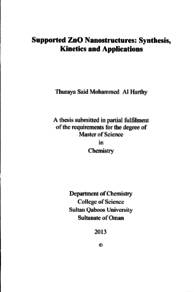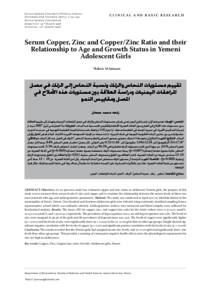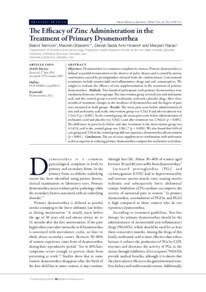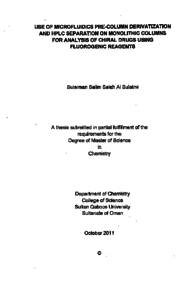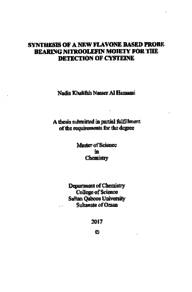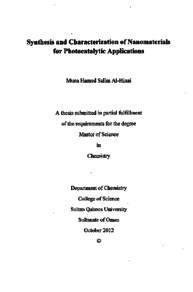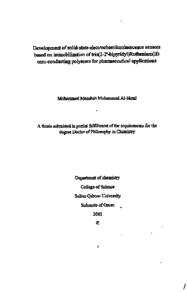Document
Supported ZnO nanostructures : synthesis kinetics and applications
Publisher
Sultan Qaboos University
Gregorian
2013
Language
English
Subject
English abstract
Photoctalysis using zinc oxide nanostructures (ZnO NSs) is considered as an emerging solution for organic mineralization and pathogenic disinfection in water treatment. Glass plate supported ZnO nanorods (NRs) were synthesized following a green-cost effective hydrothermal route. Grown ZnO NRs crystallizes in wurtzite form and exhibit good optical properties. The kinetic investigations of the nanorod growth process reveal that ZnO growth reaction is first order with respect to Zn ions concentration in growth solution and it is dependent on temperature with an activation energy of Ea = 112.53 J/mol. Doping of ZnO with different metals to tune its optical activation toward visible region, suggests manganese as a dopant of choice that enhances the photocatalytic activity of ZnO. Al'Sharqiah sand was used as a support for ZnO NSs to increase the available surface area for the photocatalytic reaction and about 57% mineralization of Mb could be achieved within 2.3 h was found with sand-supported ZnO nanostructures used as photocatalysts.
Member of
Resource URL
Arabic abstract
يعد التحفيز الضوئي باستخدام أكسيد الزنك خيارا فعالا لتفكيك المواد العضوية المقاومة للتحلل وتعقيم المياه. في هذه الدراسة تم تصنيع جسيمات أكسيد الزنك بحجم الناتو على ألواح زجاجية بطريقة اقتصادية وصديقة للبيئة في وسط مائي درجة حرارته أقل من 100 درجة سليزية. وقد بينت دراسة المواد الناتجة باستخدام تقنية حيود الأشعة السينية بشكل واضح تبلور أكسيد الزنك بأشكال سداسية منتظمة (wurtzite structure) تتمتع بخصائص ضوئية جيدة. و أوضحت التجارب المخبرية أن تكوين أكسيد الزنك يعد تفاعلا من الدرجة الأولى بالنسبة لتركيز أيونات الزنك المتفاعلة, وانه يعتمد على درجة حرارة المتفاعلات في الوسط المائي, وقد تم احتساب طاقة التنشيط لتكوين أكسيد الزنك حيث بلغت 112 . 53 جول/مول. إن تطعيم أكسيد الزنك بمعادن مختلفة لغرض هندسة خصائصه الضوئية, أثبت أن التطعيم بأيونات المنجنيز الثنائية يحسن نشاط أكسيد الزنك الضوئي. كما أن استخدام رمال الشرقية كسطح داعم لجسيمات أكسيد الزنك عوضا عن ألواح الزجاج يزيد مساحة السطح المعرض للتفاعل مما يعزز النشاط الضوئي التحفيزي لأكسيد الزنك. وقد أوضحت نتائج قياس التحفيز الضوئي باستخدام تحلل أزرق الميثيل أن 57% من الصبغة تلاشت في غضون الساعتين عند استخدام جسيمات أكسيد الزنك المثبتة على الرمل وتنشيطها بأشعة تحاكي ضوء الشمس.
Category
Theses and Dissertations

